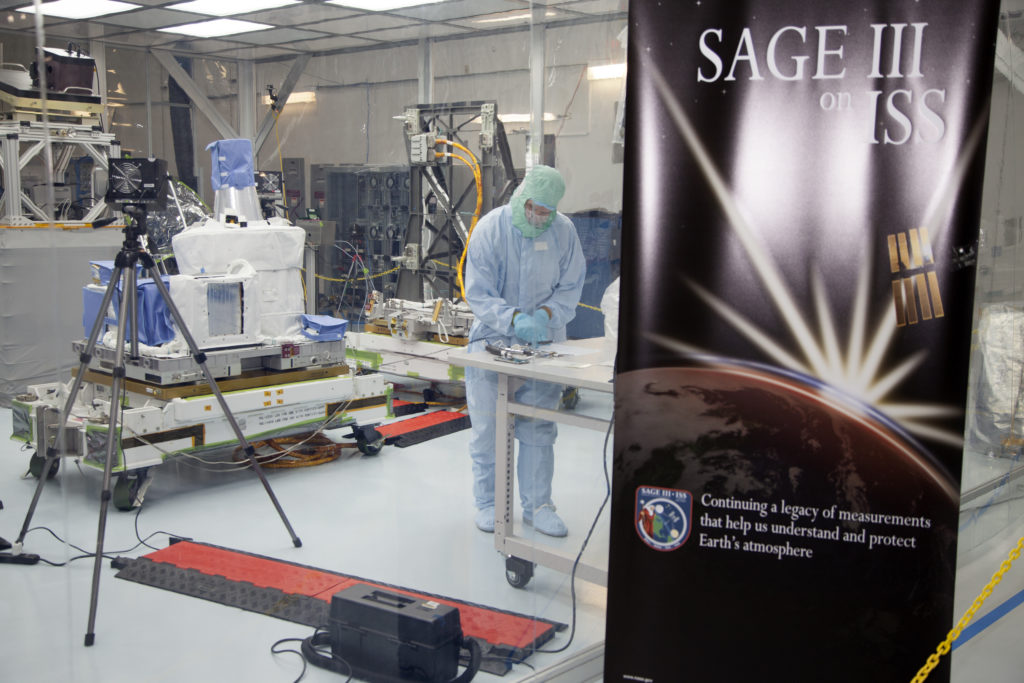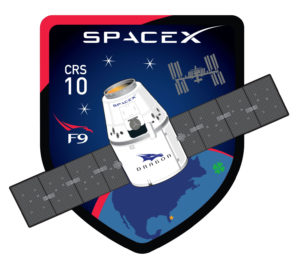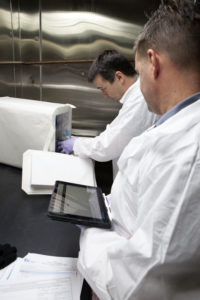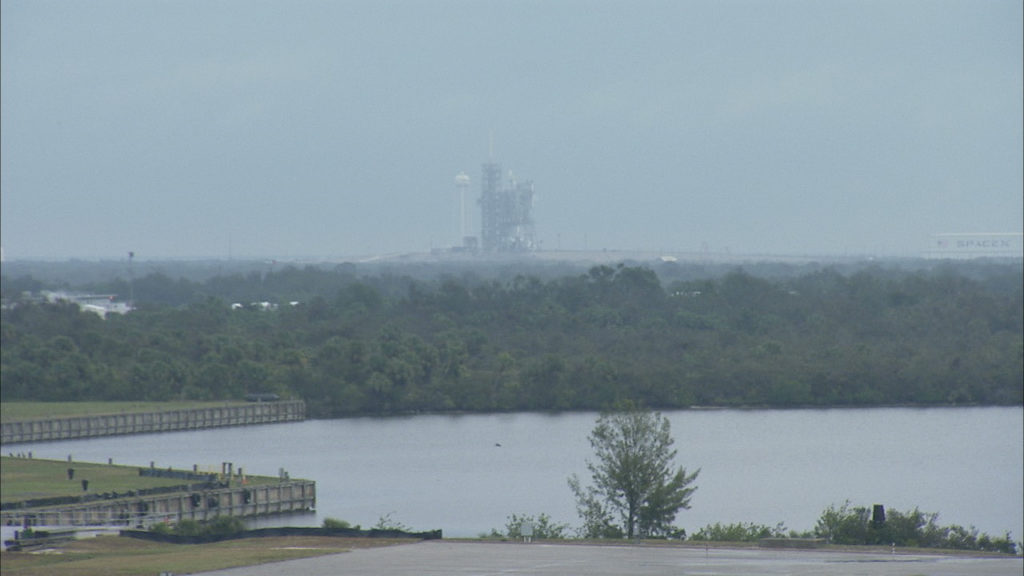The first stage engines are generating thrust and the launch vehicle is going through the sound barrier.
Month: February 2017
LIFTOFF of CRS-10!
The SpaceX Falcon 9 lifts off and the Dragon cargo ship is on the way to orbit!
‘Go for Launch’!
Falcon 9 and Dragon are in startup mode.
Strongback Retracted
The support structure for the Falcon 9 rocket has moved into launch position. The strongback holds umbilical lines that will fall away from the rocket and spacecraft at liftoff.
Engine Chilldown Underway
The launch team reports engine chilldown is underway in preparation for launch at 9:39 a.m. EST. Weather is green and the launch team is not dealing with any technical issues.
SAGE III

 The CRS-10 mission includes an Earth observation instrument called SAGE III. The 2,200-pound instrument is stored inside the trunk of the Dragon. Short for Stratospheric Aerosol and Gas Experiment, the SAGE III is the latest observatory for the program that flew the first SAGE in 1979. The instrument examines levels of ozone and other gases in the upper atmosphere of Earth. For more about SAGE III, take a look at the press kit here.
The CRS-10 mission includes an Earth observation instrument called SAGE III. The 2,200-pound instrument is stored inside the trunk of the Dragon. Short for Stratospheric Aerosol and Gas Experiment, the SAGE III is the latest observatory for the program that flew the first SAGE in 1979. The instrument examines levels of ozone and other gases in the upper atmosphere of Earth. For more about SAGE III, take a look at the press kit here.
Weather is ‘Go’
The weather has cleared this morning for launch at 9:39 a.m. EST, meteorologists overseeing the conditions reported to the launch team. Meanwhile, fueling procedures are going smoothly for the Falcon 9 rocket which will lift a Dragon spacecraft into space and on a path to the International Space Station.
Dragon’s Cargo Includes Diverse Experiments


The 5,500 pounds of supplies inside the SpaceX Dragon spacecraft includes a wide variety of experiment equipment that astronauts on the International Space Station will operate during Expeditions 50 and 51. The research will cover plant growth, crystallization of a potential immunological disease treatment and a major Earth observation instrument called SAGE III.
The APEX-4, or Advanced Plant EXperiments, is seen here being prepared in a cold room in the Kennedy Space Center Processing Facility. The research involves Arabidopsis in petri plates inside the Veggie facility aboard the International Space Station. Since Arabidopsis is the genetic model of the plant world, it is a perfect sample organism for performing genetic studies in spaceflight. Photos by NASA/Bill White
First Launch from LC-39A at Kennedy Since 2011

The launch of CRS-10 will be the first from Launch Complex 39A at NASA’s Kennedy Space Center in Florida since the final flight of the space shuttle fleet in July 2011. The launch pad was built for the moonbound Apollo/Saturn V stacks that sent astronauts to the moon.
It was modified for the needs of the space shuttles, which launched from pads A and B for 30 years, and then modified again by SpaceX for use by the company’s Falcon rockets and Dragon spacecraft.
Liquid Oxygen Loading Begins
 SpaceX operators are now loading liquid oxygen aboard the first stage of the Falcon 9 rocket. The propellant will be mixed with the RP-1 kerosene fuel to power the nine Merlin engines of the first stage. The second stage, powered by a single Merlin, burns a similar combination to place the Dragon spacecraft and its cargo into orbit.
SpaceX operators are now loading liquid oxygen aboard the first stage of the Falcon 9 rocket. The propellant will be mixed with the RP-1 kerosene fuel to power the nine Merlin engines of the first stage. The second stage, powered by a single Merlin, burns a similar combination to place the Dragon spacecraft and its cargo into orbit.
